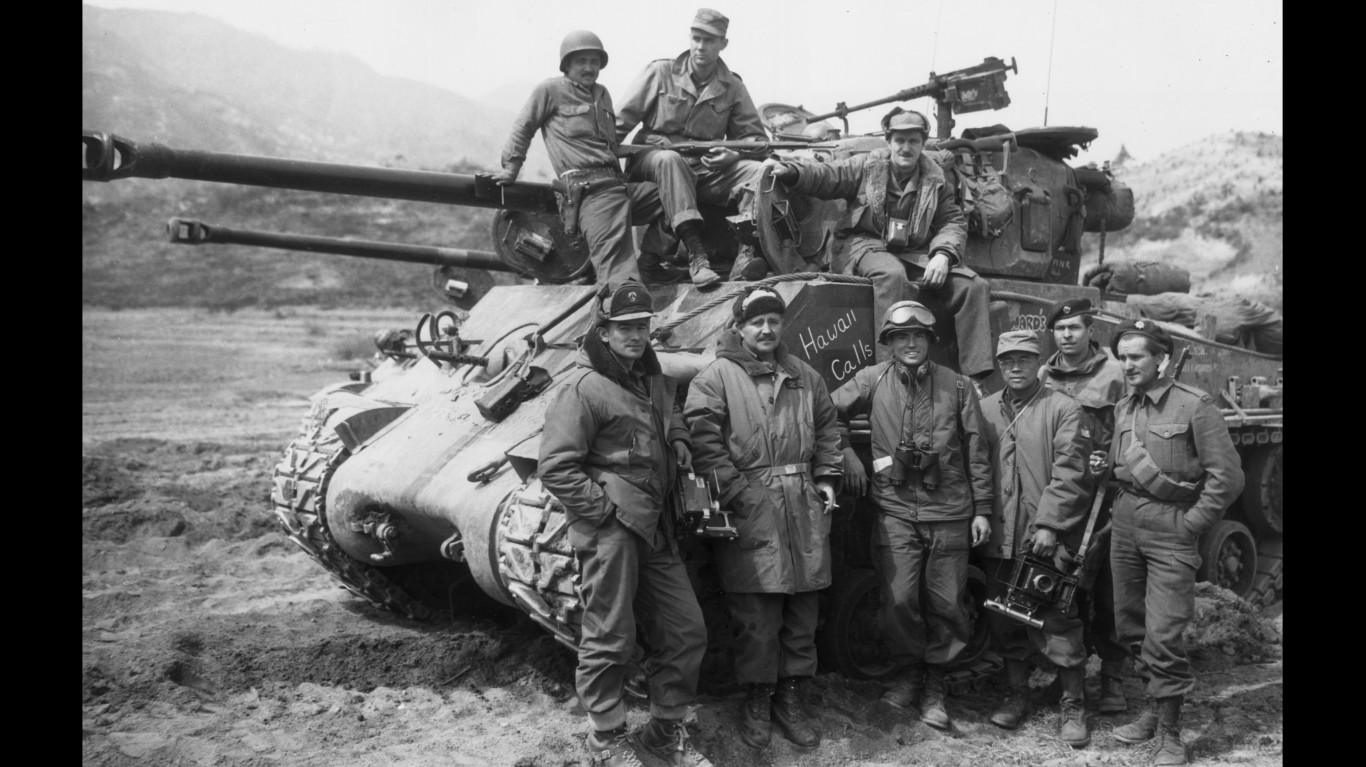
It is coming up on two years since the United States finally fully exited the battlefield in Afghanistan — a decade after the war started in the aftermath of the September 11th attacks. The war is one of the longest in American history, roughly double the time the nation spent in both of the world wars combined. But in the context of world history, there are wars that dwarf the conflict. (Also check out: The 35 billion-dollar weapons in the U.S. Military budget.)
Some wars are quick, especially for countries who spend a lot on their military. But this is not always the case. Before technology made it possible to kill many enemies from anywhere, opposing sides could retreat, take refuge in a fortified castle, and wait to go back out and fight. This allowed some wars in the past to drag out decades and even centuries.
24/7 Wall St. has compiled a list of the longest wars in history by reviewing data and articles from various sources. In order to appear on this list, a conflict had to meet the definition of war as an open and usually declared armed conflict between political entities such as sovereign states or competing factions within the same state, such as a civil war. The conflict had to be sustained over a period of time and intended to resolve political or territorial disputes.
Click here to read about the longest wars in history

20. Great Northern War
> Duration: 1700-1721 (21 years)
> Combatants: Russian Empire and allies; Swedish Empire
> Killed: 300,000
> Fought in: Denmark, Russia, Nordic countries
In the early 18th century, Sweden was the dominant power in the Baltic region. Three neighboring kingdoms — Russia, Denmark-Norway, and Saxony-Poland — formed a coalition to attack Sweden. They attacked after King Charles XI died and his 14-year-old son Charles XII was crowned. As the war continued, England and Prussia also joined the Russian coalition, sensing an opportunity to gain more land and resources. Finally, after more than two decades of fighting, Sweden surrendered and forfeited much of its territory and wealth to its opponents. This event helped turn Russia into the world power it is today and damaged Sweden’s influence on the world stage.
[in-text-ad]

19. The Peloponnesian War
> Duration: 431-404 B.C. (27 years)
> Combatants: Greek city states
> Killed: 100,000+
> Fought in: Greece, western Turkey, southern Italy
The Peloponnesian War was a conflict between Greek city states — one side led by Athens and the other by Sparta. The two sides had previously been at war, but had agreed to a truce, though the peace between them was full of tension. Eventually fighting reignited when both sides refused to back down and diplomatic efforts to resolve a dispute failed. After a decade of fighting, the two sides signed another truce that lasted six years. Finally, in 405, Sparta’s navy was able to defeat that of Athens thanks to financial help from Persia. Sparta set up a blockade, starving the Athenians and forcing them to surrender.
18. Thirty Years War
> Duration: 1618-1648 (30 years)
> Combatants: Protestant and Catholic German city states, royal houses of Bourbon and Habsburg
> Killed: 8 million
> Fought in: Europe
The appropriately-named Thirty Years War was a three-decade long conflict between the Protestants and Catholics of 17th century Europe. Emperor Ferdinand II of the Holy Roman Empire forced his subjects to follow Catholicism, though a previous peace treaty had given Roman subjects the right to follow their own faith. Nobility in what are today Austria and Czech Republic rebelled. After 30 years of fighting, both sides signed the Peace of Westphalia treaty, which drew up boundaries among combatant areas, establishing official borders and shaping the way geopolitics is viewed to this day.

17. Aceh War
> Duration: 1873-1904 (31 years)
> Combatants: The Netherlands and Aceh
> Killed: 90,000
> Fought in: Indonesia
The Aceh War was one of the most drawn out struggles against encroaching colonialism. The Dutch felt they had a claim to Sumatra, a large Indonesian island, but the people in the Aceh region resisted Dutch rule, even after their sultan signed a peace treaty recognizing the sovereignty of the Netherland in the area. Aceh fighters engaged in decades of guerilla warfare with Dutch troops, but they were overmatched. Aceh gained independence in 1949.
[in-text-ad-2]

16. Wars of the Roses
> Duration: 1455-1487 (32 years)
> Combatants: England royal houses House of Lancaster and House of York
> Killed: 100,000
> Fought in: England
In the Wars of the Roses, families Lancaster and York fought for control of the British throne as Henry VI from the House of Lancaster was mentally ill and unable to rule. Both families were descended from the same line, and each felt entitled to the throne. After decades of battling, York’s Richard III was killed, and Henry VII of the Lancasters was named king. He soon after married a York, uniting the houses and ending the war. This conflict inspired much of George R.R. Martin’s novel series “A Song of Ice and Fire,” which became HBO’s hit series “Game of Thrones.” Even the names of the warring families, Lancaster and York, were used to create the Lannister and Stark names in the novels.

15. Guatemalan Civil War
> Duration: 1960-1996 (36 years)
> Combatants: Guatemalan rebels against Guatemalan government
> Killed: 200,000
> Fought in: Guatemala
Six years after a U.S.-backed coup in Guatemala deposed the country’s democratically-elected leader, the Guatemalan Civil War began. Guerilla troops began attacking government forces, kickstarting a 36-year conflict marked by kidnappings, torture, executions, and violence — particularly against Mayans in the country. Though the power in Guatemala frequently changed hands, either via election or coup, the war raged on until 1996, when Alvaro Arzu negotiated a peace deal.
[in-text-ad]

14. Punic Wars
> Duration: 264-146 B.C. (43 years)
> Combatants: Roman Republic and Carthage
> Killed: 250,000
> Fought in: Areas around Mediterranean Seas
Like the first World War, the Punic Wars began with fighting among smaller factions that escalated when larger allies, namely Rome and Carthage, joined the battle. The war was over control of the previously-split island of Sicily. Though Carthage was wealthier and had more battle experience, many of its leaders were corrupt and embezzled military funds. Mercenaries went unpaid, and Rome was able to defeat the powerful Carthaginian navy. Rome eventually defeated Carthage, destroying the city-state and replacing it as one of the most powerful entities in the world.
13. Papua Conflict
> Duration: 1969-present (52 years)
> Combatants: Free Papua Movement and Indonesia
> Killed: 150,000
> Fought in: western New Guinea
Since the Netherlands left West Papua in the 1960s, turning power in the area over to Indonesia, residents of West Papua formed the Free Papua Movement that has fought a civil war for independence. In December 2018, 31 people were killed in an attack claimed by the movement. The Free Papua Movement claims it attacked Indonesian soldiers, but Indonesian authorities say those killed were construction workers.
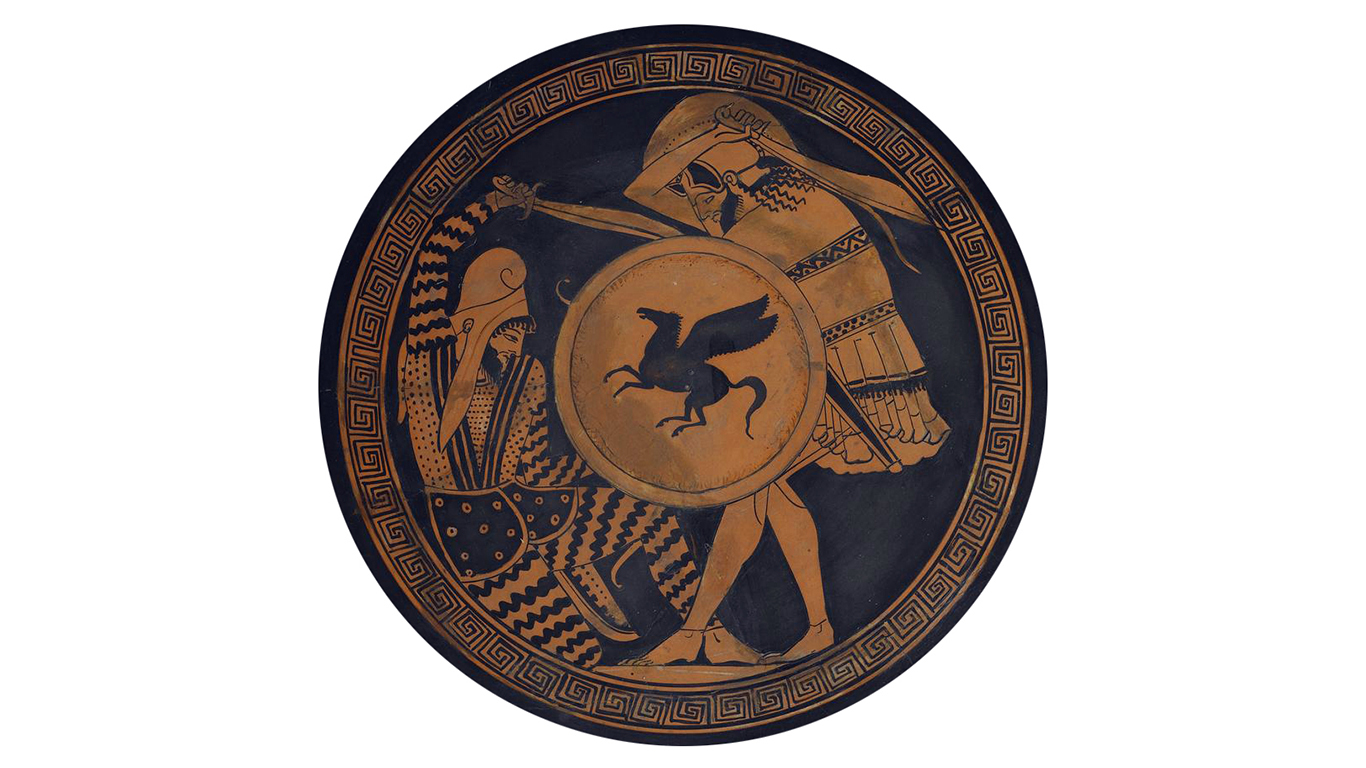
12. Greco-Persian Wars
> Duration: 499 B.C.-449 B.C. (50 years)
> Combatants: Greek city states and Persian Empire
> Killed: unknown
> Fought in: Greece, Asia Minor
An uprising of Greek city states against Persia led to one of the longest and bloodiest wars of the ancient world. The Persians easily repelled the assault, but since Athens had sent ships in support of the rebellion, Persian leader Darius used this as an excuse to launch an assault on all of Greece. Though the Persian army was much larger, the Greeks outflanked and outmaneuvered them on land and at sea. The Greeks repelled wave after wave of Persian forces, and after 50 years of fighting, Persia agreed to a peace treaty.
[in-text-ad-2]

11. Korean War
> Duration: 1950-present (71 years)
> Combatants: North Korea, South Korea, China, United States, NATO
> Killed: 1.2 million
> Fought in: Korean peninsula
Though the U.S. military is no longer in an active armed conflict on the Korean Peninsula, there was never an official peace treaty signed between North Korea and South Korea, so the countries are still technically at war. Though there have been recent signs of possible improved relationships as the heads of state of North Korea and South Korea met in 2018, tension between the countries is still high and there is no end in sight.

10. Karen Conflict
> Duration: 1949-present (72 years)
> Combatants: Karen National Union and the Burmese Tatmadaw
> Killed: unknown
> Fought in: Myanmar
As Burma (today Myanmar) began to set up its own government after gaining independence from the British in 1948, many in the Karen ethnic minority felt they were being excluded from the formation of the government and demanded self-sovereignty. Though there was optimism the conflict could be resolved with the election of Aung Sang Suu Kyi, who is a a Nobel peace prize winner and a popular leader throughout the country, the Karen National Union is still at war with the Myanmar army. The group has dwindled in numbers recently and is carrying out more guerilla attacks than full out battles.
[in-text-ad]

9. Kashmir Conflict
> Duration: 1947-present (74 years)
> Combatants: India and Pakistan
> Killed: 80,000
> Fought in: Kashmir province
Another conflict that started after the end of World War II and has not yet concluded is the Kashmir conflict, which still divides two of the largest countries in the world, India and Pakistan. Long-simmering tensions between the sides were reignited recently when Pakistan-based fighters killed dozens of troops in the disputed region of Kashmir. India responded with airstrikes on Pakistani soil.
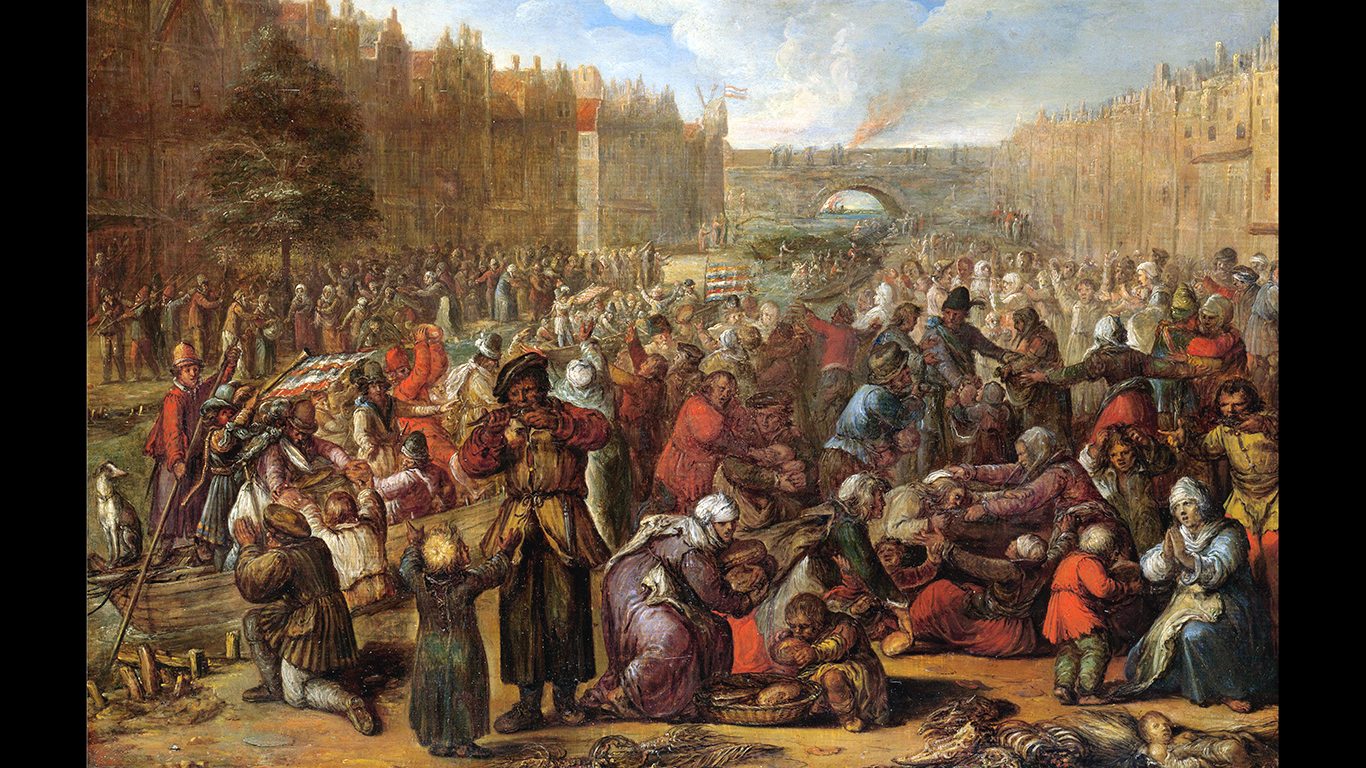
8. Dutch War for Independence
> Duration: 1568-1648 (80 years)
> Combatants: Seventeen Provinces in the Netherlands against the Spanish King
> Killed: 100,000+
> Fought in: The Low Countries
The Dutch War for Independence, also known as the 80 Years War, marked the rise of Protestantism in Europe and signaled the end of Spanish supremacy in the region. After years of Spanish rule, the largely protestant Dutch people began to resent their Catholic rulers, and William of Orange began a revolt. Though Spain had a much larger military, its attention was divided by its battles with England and France and the Dutch scored crucial surprise victories. In the 1630s, the Netherlands allied with France. The two allies pushed into Spanish-controlled territories. After witnessing the combined might of Dutch and French forces, Spanish leaders signed a truce in 1648.
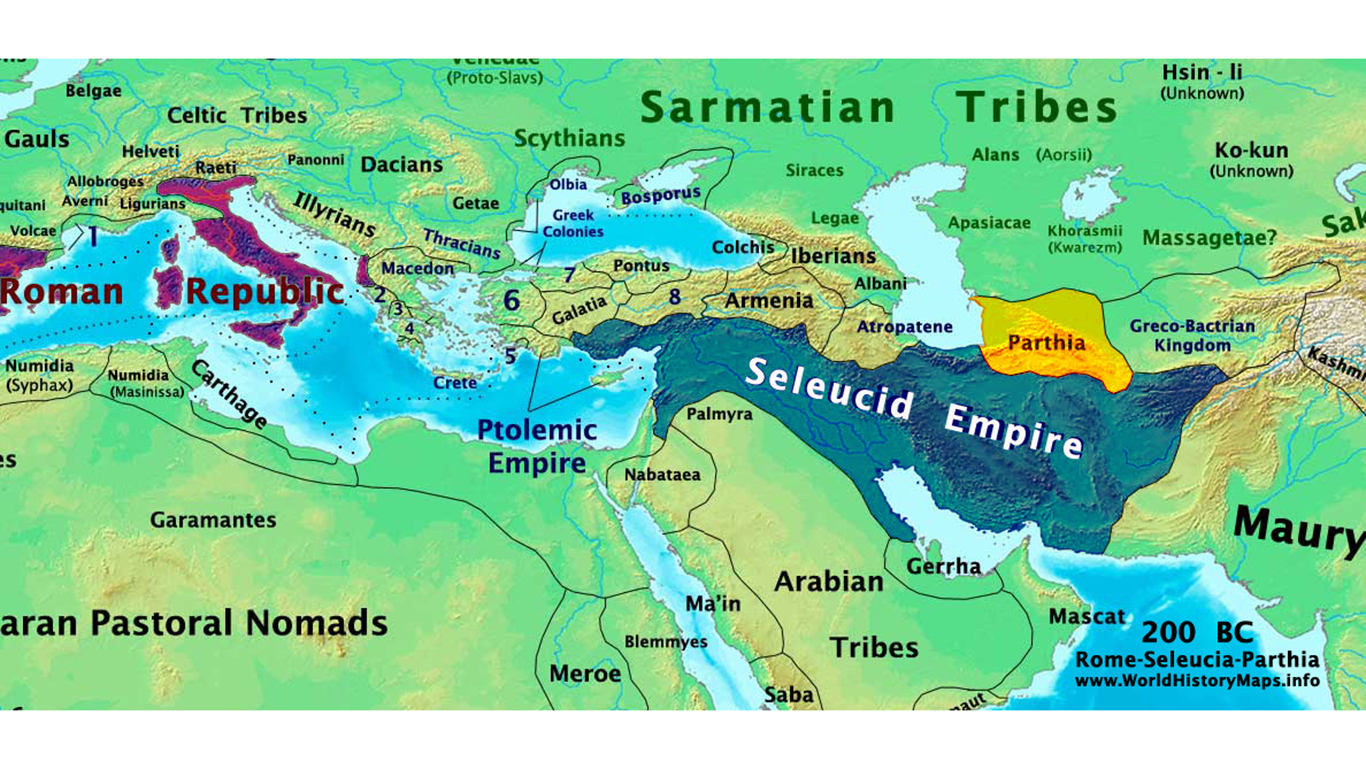
7. Seleucid-Parthia War
> Duration: 238 B.C.-129 B.C. (109 years)
> Combatants: Seleucid Empire of Persia and the state of Parthia
> Killed: unknown
> Fought in: Mesopotamia, modern-day Iran, central Asia
Like many ancient empires, the Seleucid Empire, which ruled from Thrace in Europe to the border of India, faced many internal and external battles that eroded its power. The empire briefly lost control of Parthia (modern Iran), then won it back in a series of battles with the Arsacids, who had taken control of Parthia in 235 B.C. But that was one of many battles the empire had to fight at the time. The Arsacids, under the leadership of Mithridates I, dealt the final blow to the Seleucid Empire, taking nearly all of its territory as well as the rest of Mesopotamia.
[in-text-ad-2]
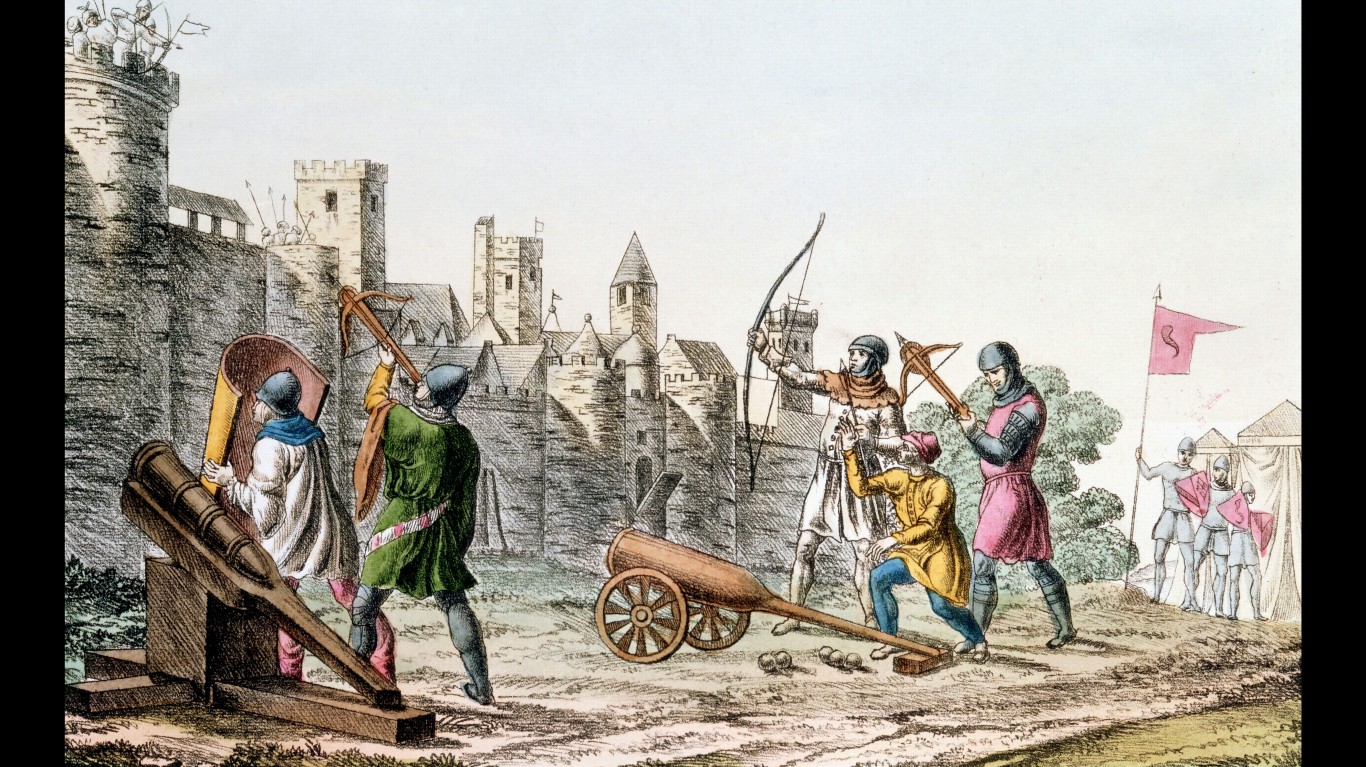
6. Hundred Years’ War
> Duration: 1337-1453 (116 years)
> Combatants: House of Plantagenet (or House of Anjou) of England and House of Valois of France
> Killed: 3.5 million
> Fought in: Modern-day France
The Hundred Years’ War, to determine who would control what is now France, actually lasted for over a century. For 116 years, House Plantagenet, rulers of England, and House Valois, descendants of earlier French kings, jockeyed for control of the French throne following the death of Charles IV. As Europe’s royal families mixed with one another, claims to titles became complex. The war was intermittent and fought among succeeding rulers. Both sides also had to deal with internal struggles as well as their war with one another. House Valois, led by Charles VII, seized on the opportunity presented by England’s Wars of the Roses and finally won the war.
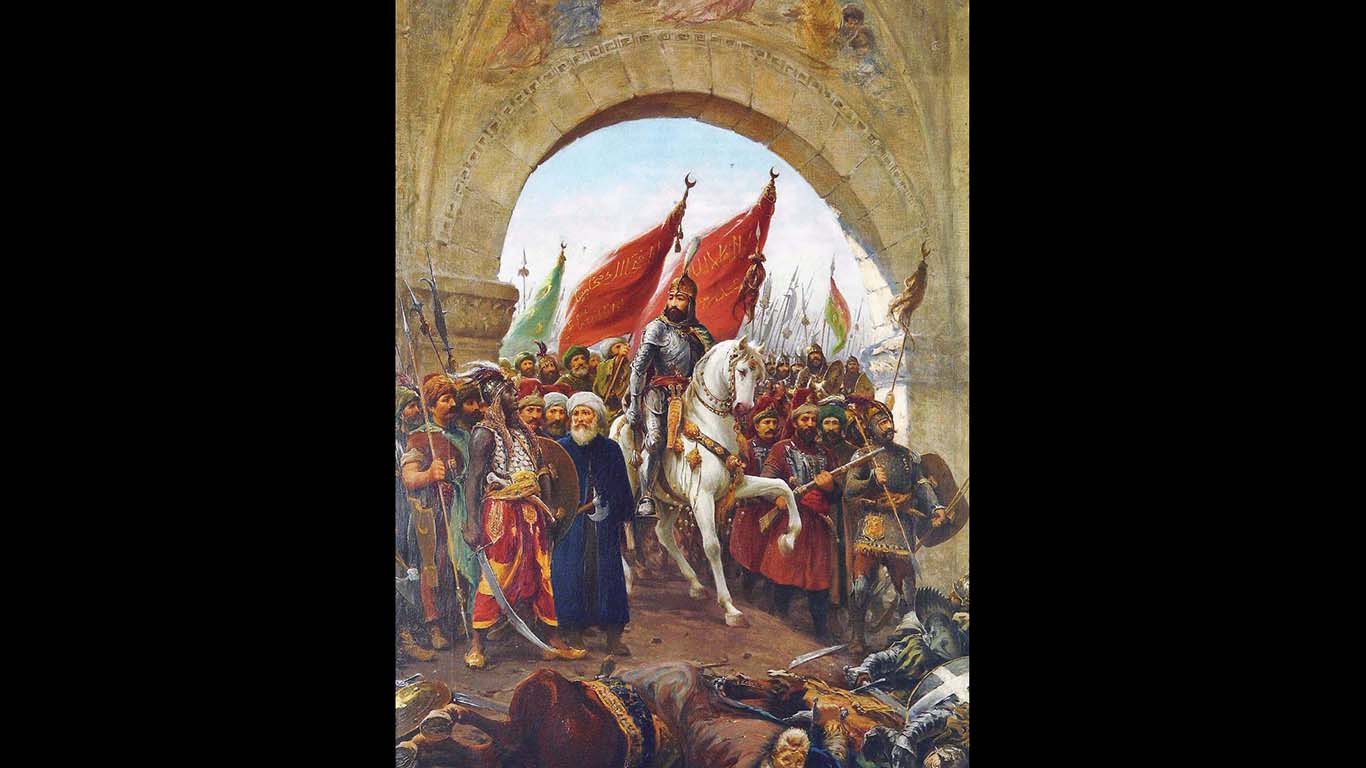
5. Byzantine-Ottoman War
> Duration: 1265-1479 (214 years)
> Combatants: Byzantine Empire and the Ottoman Empire
> Killed: unknown
> Fought in: Modern-day Turkey, western Asia Minor
The Byzantine-Ottoman Wars marked the end of the Byzantine Empire, as well as the Middle Ages of Europe. The Ottoman Empire continued to grow during the 13th, 14th, and 15th centuries, while the Byzantine-controlled territory shrank. Ottoman ruler Mehmed II dealt a crushing blow to the Byzantines with the Fall of Constantinople, when he seized the heavily fortified city.
[in-text-ad]
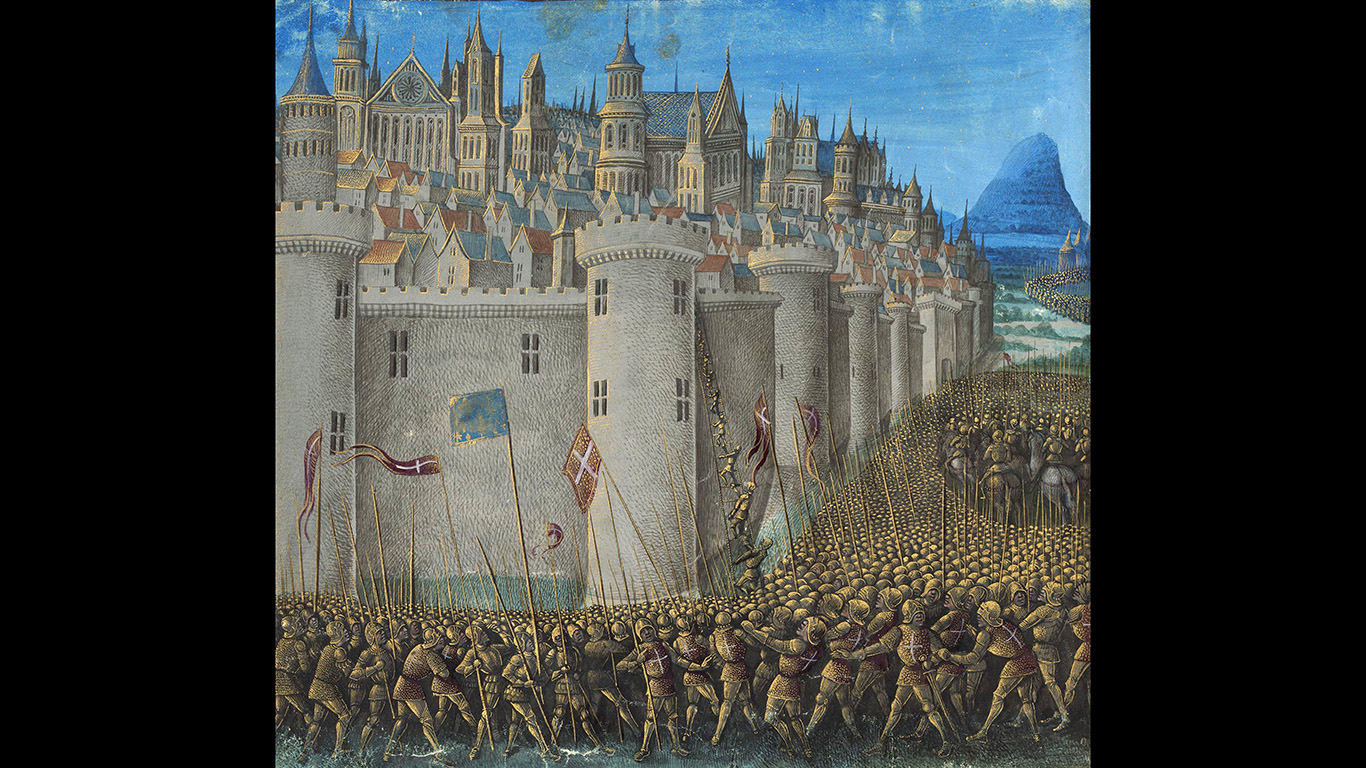
4. Byzantine-Seljuq War
> Duration: 1048-1308 (260 years)
> Combatants: Byzantine Empire and the Seljuk Turks
> Killed: unknown
> Fought in: Asia Minor and Syria
The Byzantine Empire was involved in more than two centuries-long conflicts, the longest being the war with the Seljuk Turks. For 260 years, the Byzantines and Seljuks lost and retook territory in Asia Minor and the surrounding areas. Though the Seljuk Turks lost some of their gained territory as a result of the Crusades, the Byzantine Empire was overstretched by the conflicts and could not maintain its territory. The war ended after 260 years and hastened the decline of the Byzantine Empire.

3. Arauco War
> Duration: 1536-1825 (289 years)
> Combatants: The Araucanian Indians of Chile and the Spanish Empire
> Killed: unknown
> Fought in: Modern-day Chile, southern part of South America
For almost 300 years, the Spanish tried and failed to colonize the Araucanian people, which included the Mapuche, the Picunche, and the Huilliche, of modern day Chile. Though the Spanish conquistadors came to control much of South America, the Mapuche resisted, largely thanks to the natural border of the Bio Bio River. Spain declared peace with Chile and its inhabitants, including the Mapuche, in 1825 and Chile became independent.
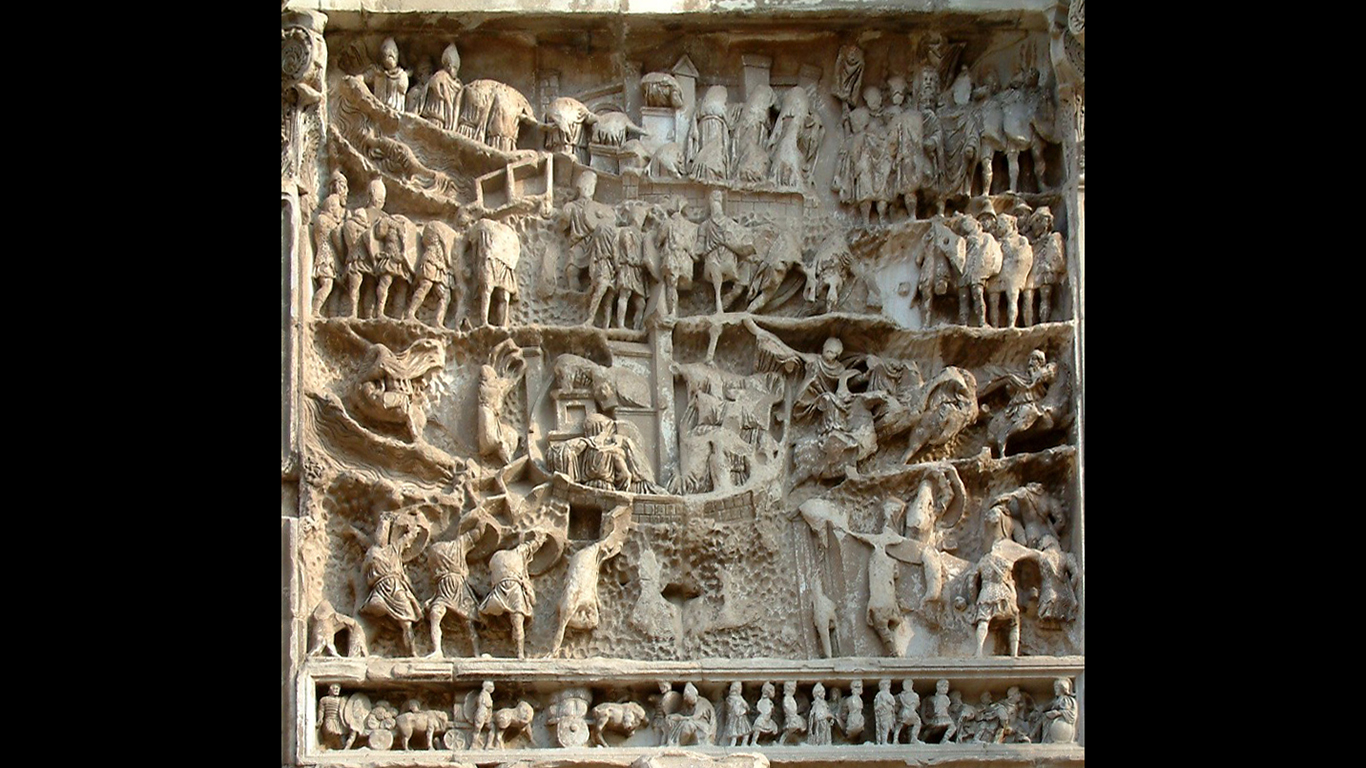
2. Persian-Roman Wars
> Duration: 92 B.C.-A.D. 629 (721 years)
> Combatants: Roman Republic/Empire and the Parthians and the Sassanids in Persia
> Killed: unknown
> Fought in: Modern-day Iran
The Persian-Roman Wars went on for so long, they spanned two different Persian empires, the Parthians and the Sassanids. For much of the conflict, cities around the border were taken by one side, then recaptured by the other over and over again, without deep forays into enemy territory. Much of the damage was financial. Both sides spent so much preparing to fight each other they were left vulnerable to other attackers.
[in-text-ad-2]

1. Iberian Religious War
> Duration: 711-1492 (781 years)
> Combatants: Spanish Empire and the Moors
> Killed: 7 million
> Fought in: Spain
The longest continual war in history was the Iberian Religious War, between the Catholic Spanish Empire and the Moors living in what is today Morocco and Algeria. The conflict, known as the “Reconquista,” spanned 781 years — more than three times as long as the United States has existed. As the Moors crossed the Mediterranean Sea and claimed territory in Europe, Spain was uncomfortable with encroachment by non-Christians and met the Moors in battle. Though it was not part of the Crusades, the war was supported by the Catholic Church. In the 15th century, Moorish power and territory waned. In 1492, the Spanish recaptured Grenada and cemented their status in the region, ending the Reconquista.
Credit Card Companies Are Doing Something Nuts
Credit card companies are at war. The biggest issuers are handing out free rewards and benefits to win the best customers.
It’s possible to find cards paying unlimited 1.5%, 2%, and even more today. That’s free money for qualified borrowers, and the type of thing that would be crazy to pass up. Those rewards can add up to thousands of dollars every year in free money, and include other benefits as well.
We’ve assembled some of the best credit cards for users today. Don’t miss these offers because they won’t be this good forever.
Flywheel Publishing has partnered with CardRatings for our coverage of credit card products. Flywheel Publishing and CardRatings may receive a commission from card issuers.
Thank you for reading! Have some feedback for us?
Contact the 24/7 Wall St. editorial team.

 24/7 Wall St.
24/7 Wall St.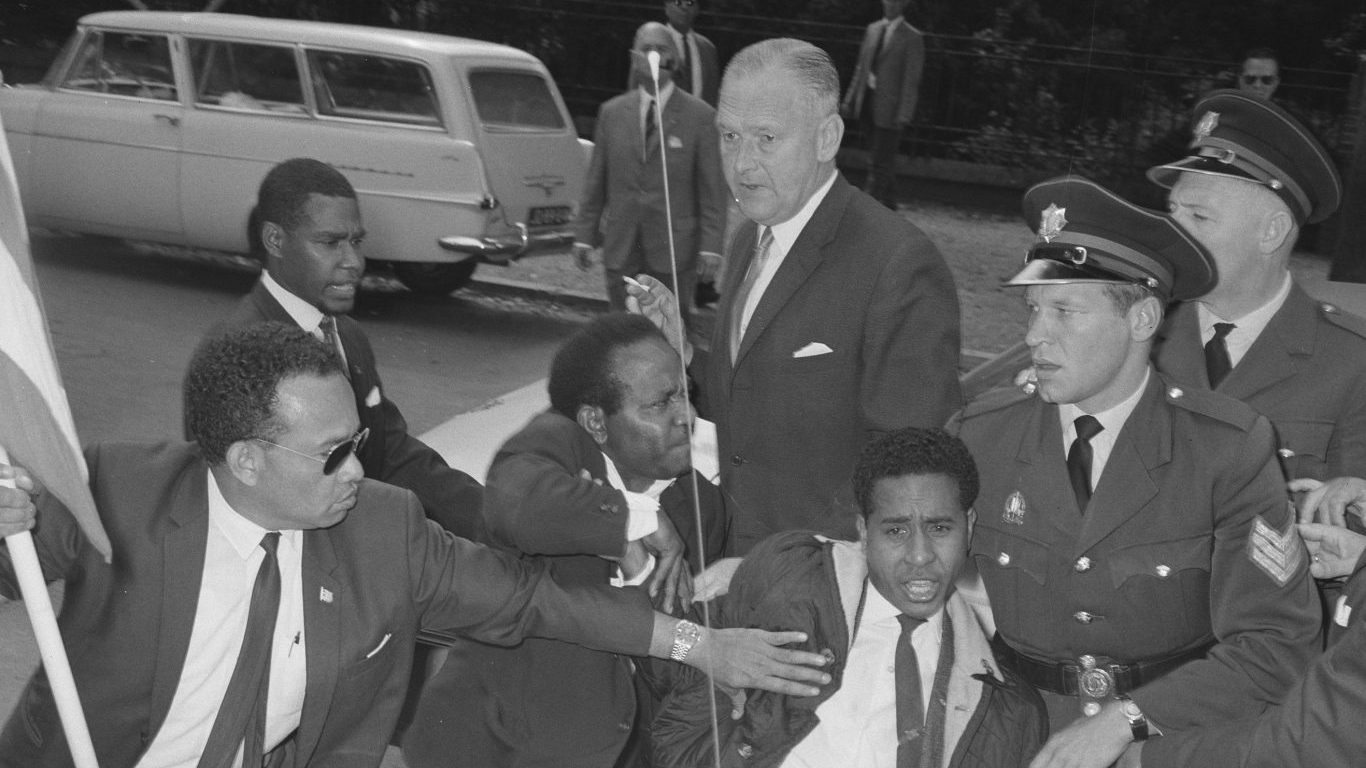
 24/7 Wall St.
24/7 Wall St.